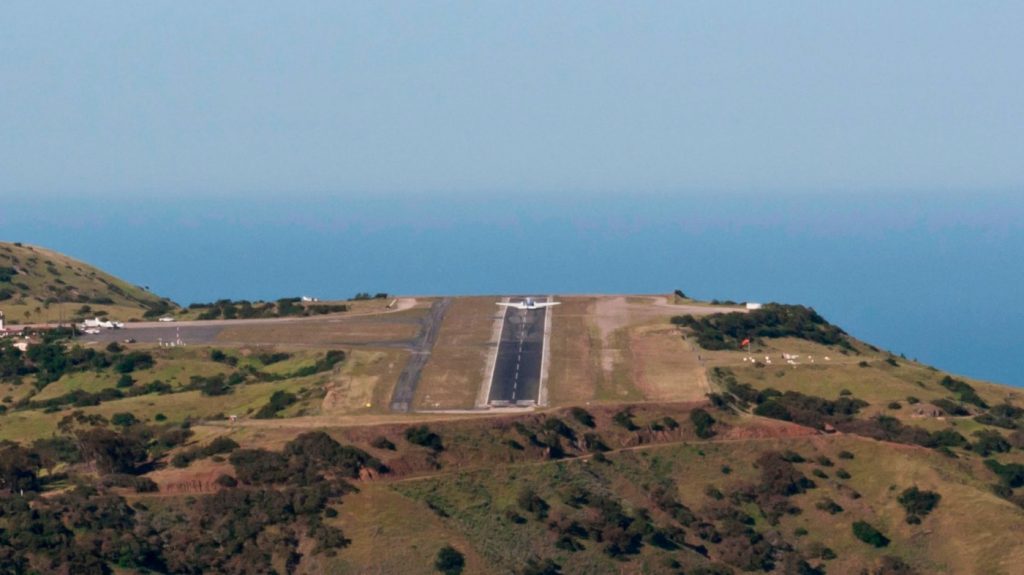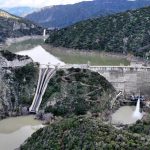With complete darkness apparently surrounding them, five people aboard a twin-engine airplane sat at the eastern end of the runway at Catalina Airport, ready to complete a rescue mission intended to bring some of them back to Santa Monica after they had become stranded with aircraft mechanical issues.
At about 8 p.m. on Oct. 8, a Tuesday, the pilot began moving the plane forward, the runway likely lit only by the plane’s landing light and otherwise pitch-black.
The Beechcraft 95 probably needed to reach 85 mph or so to lift off from the 3,000-foot runway, said Richard Cassel, a flight instructor at the Van Nuys Airport.
The plane ascended about 75 feet after takeoff, said Juan Browne, a former U.S. Air Force flight instructor and current commercial airline pilot who examined the flight’s data.
Things then quickly changed.
“The data looks like they just sank into a steady downhill run into the terrain,” Browne said.
The plane crashed in a ravine. All five were killed.
The crash’s cause may take the National Transportation Safety Board a year or more to figure out, but pilots familiar with the airport say that without any lights on the runway, or on the ground on the island’s south side, disorientation is a likely factor.
“It’s like an IMAX theater without the screen on, it’s just black,” said Cassel, who said he has flown with students to the island airport hundreds of times.
The airplane’s occupants included: the plane’s owner, Ali Safai, 73, of West Hills; Haris Ali, 33, of Fullerton; Margaret Mary Fenner, 55, of Chester Springs, Pennsylvania; Gonzalo Lubel, 34, residence unclear; and Joeun Park, 37, of North Hills.
Who was piloting the plane has not been disclosed.
Plane owner tried to help
Officials with a Santa Monica Airport-based flight school, Proteus Aero, said in a statement last week the purpose of the flight was to pick up stranded school members.
“It sounded like a good Samaritan coming in to pick up some people who were maybe with a flight school and had been left there,” said Steve Clute, a former Navy flight instructor who lives in Carlsbad and has flown to the airport three or four times. “He was trying to do a good, positive service.”
Safai, who had owned another flight school at the airport before closing its doors in 2018 and still kept his plane at the airport, offered to help by using his twin-engine Beechcraft 95 to pick them up, the Proteus statement said.
Flight records show Safai’s plane took off from Santa Monica Airport shortly before 6 p.m. that evening, landing at Catalina about 6:20 p.m.
Why it took until 8 p.m. before the pilot attempted to take off was unclear.
Though Catalina Airport operations generally stop at 5 p.m., pilots can take off and land before sunset so long as they pre-arrange those intentions with airport staff, Carl True, the airport’s general manager, told the Southern California News Group last week.
In this case, the pilot pre-arranged to land the plane, but he did not pre-arrange to take off and was not authorized to do so, True has said.
A tiny island airport
Catalina Airport, referred to by some as the Airport in the Sky because it’s 1,600 feet above sea level, operates from 8 a.m. to 5 p.m. and prohibits any flight activity in or out of the airport after sunset.
“There’s a reason why that airport is closed at night,” Cassel said. “You can’t see anything.”
The narrow, 3,000-foot-long runway sits on a mesa with steep downslopes at either end with a crown in the middle that can sometimes mess with a pilot’s perception of how much room they have left to take off or land, said Cassel, a flight instructor out of Van Nuys.
The airport has no control tower.
Students like to fly to the airport in order to receive an endorsement from an instructor, Cassel said.
During the day, Clute added, pilots like to fly over the channel and into the airport because of its elevation.
Dangers at night
Related Articles
Pilot’s wife safely lands plane while en route to Monterey during medical emergency
5 dead after a small plane crashes on Catalina Island
Passenger in California plane emergency landing faces federal drug charge, was under investigation
Police find drugs after plane makes emergency landing on California freeway
1 killed in mid-air crash of two small planes in Southern California
But at night, to pilots, the airport is drastically different.
In virtual darkness, a pilot has no visual cues, Cassel said.
A pilot can “really be disoriented because it’s only 1,000 to 1,500 feet above the water and it’s just pitch-black,” Clute said. “You lose the visual aids, and the difference with flying is you’re in three dimensions, whereas when you’re driving at night, you’re in two dimensions.”
Browne said the hazards and limitations at the airport are widely known.
Had the pilot taken off eastbound, the pilot likely would have needed a bit more groundspeed in order to achieve liftoff, Cassel said. But the pilot also would have had lights from Long Beach and surrounding cities across the Pacific Ocean as a possible guide for altitude.
Taking off westbound, “you’re traveling in a machine, going 85 to 90 mph, you’re suddenly out over open space very quickly, and there’s no lighting on the south side of the island,” Cassel said.
And while instrument-rated pilots — which Safai was — can sometimes rely on instruments in the cockpit to give a sense of altitude, Cassel said, it was “pretty far-fetched” to assume the pilot could go from a visual takeoff to immediately depending solely on the instruments.
A possible mechanical or weight or other issue has not been ruled out as the cause of the crash. But with clear conditions at the time of takeoff, according to a National Weather Service meteorologist, the veteran pilots believe the pilot likely had no view of a horizon and became disoriented.
“You’re just stacking up too many odds against you,” Browne said. “You have five people on board, possibly with one or two guys reluctant to do it, (it’s) at nighttime, you don’t have permission to do it.”
One choice was staying put for the night.
“I always say the greatest safety device in your airplane is the credit card to say, ‘No, we’re not going to do it,’ ” he added. “We’re going to spend the money.”


